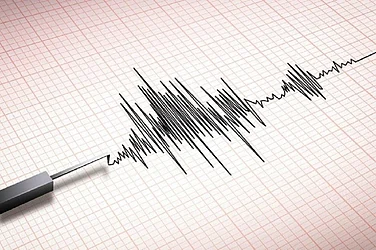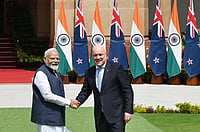Over six million people or over 28 per cent of Sri Lanka's population are "food insecure" and this situation is likely to deteriorate as the crisis unfolds in the island nation which is grappling with its worst economic crisis, the World Food Programme has said.
Sri Lanka is currently reeling under a severe foreign exchange crisis with falling reserves and the government is unable to foot the bill for essential imports.
The economic crisis has led to an acute shortage of essential items like food, medicine, cooking gas, fuel and toilet paper, with Sri Lankans being forced to wait in lines for hours outside stores to buy fuel and cooking gas.
The WFP on Friday said in a situation report that 6.3 million people (28.3 per cent) in the country are food insecure and this is likely to deteriorate as the crisis unfolds.
Of these, at least 65,600 people are severely food insecure. WFP warned that these figures could increase drastically without immediate intervention, the report added.
WFP said skyrocketing food costs are making it harder for the population to meet their food needs. About 6.7 million people are not consuming adequate diets and 5.3 million people are reducing the number of meals eaten.
The agency is immediately scaling up operations to reach 3.4 million people in 2022. The WFP said it urgently requires 63 million dollars to carry out its life-saving assistance.
The situation update said that household food security and nutrition situation is set to deteriorate as the crisis ensues, according to the WFP and FAO’s recent Crop and Food Security Assessment Mission (CFSAM).
Further, incomes in the last three months have plummeted and about two in five households reported that their income has been cut in half. To cope with the lack of food, 5 million people are using crisis or emergency livelihood coping strategies that are likely to impact their medium- to long-term capacity for income-generating activities and food security.
Food inflation reached a staggering 80 per cent in June 2022. Coupled with livelihood disruptions, this further limits households’ purchasing power.
The update said that the upcoming Maha season is at risk of seeing a 50 per cent reduction in paddy planting areas and an unlikely recovery of the fisheries and livestock sectors if farmers do not gain access to seeds, fertilizer, and financial assistance.
“If farmers do not gain access to seeds, other inputs and financial assistance, the upcoming Maha season could see a reduction in paddy planting areas by 50 per cent, an unlikely recovery of the fisheries and livestock sectors, and a further increase in food prices and food import reliance,” it said.
WFP is scaling up its crisis response through unconditional food assistance, as well as support to the national school meals programme and the national nutrition programme (Thriposha). WFP aims to reach a total of 3.4 million beneficiaries through this response by December 2022.
WFP has so far received USD 20.1 million from the governments of Australia, Japan, and New Zealand, as well as from the UN Central Emergency Response Fund and other multilateral donors. This represents 32 per cent of its emergency appeal for USD 63 million, the UN agency said.


























